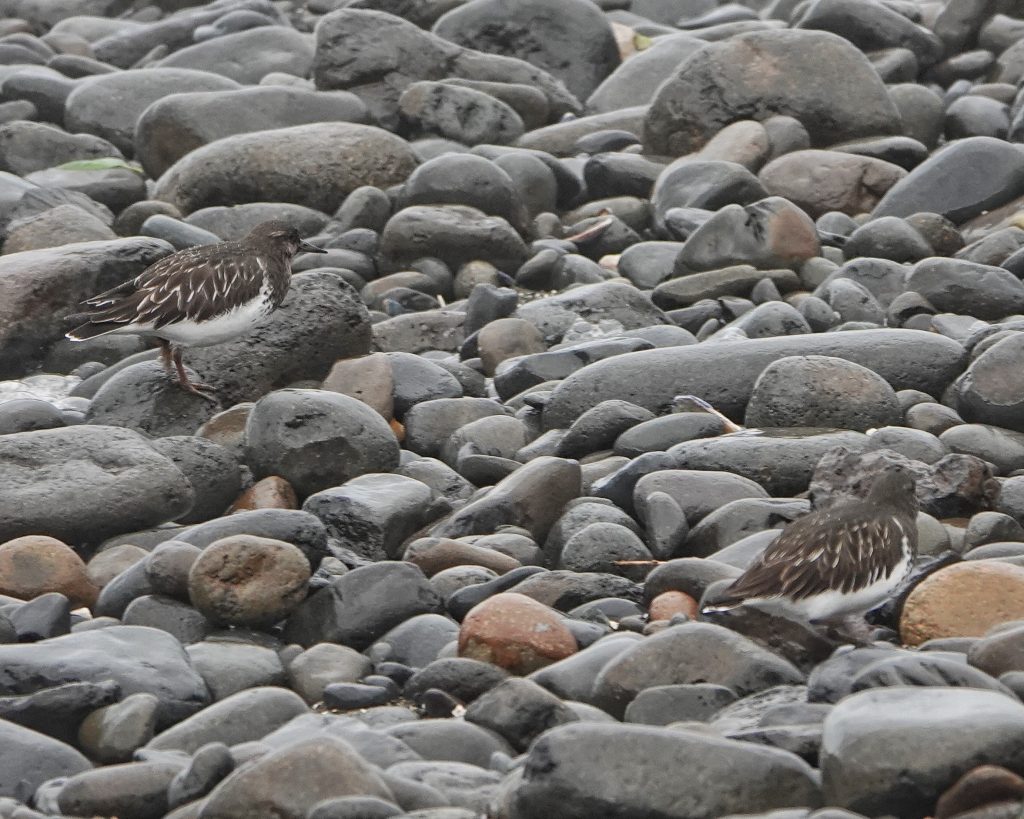
Black Turnstones are fun birds to watch, with their darting ways and debris flipping, hammering at barnacles and prying off limpets, and they are one of two birds (Black Oystercatcher is the other) that I see just often enough on beach trips to be disappointed when I don’t find any. They were the high point of my hail induced layover at Bob Creek Wayside. I read of people finding them in flocks, but I’ve never seen more than a handful at any given time. Although that could well be because most of the flock wasn’t moving, since, due to their black, white, and grey color scheme blending so well with the rocks, I don’t believe I have ever spotted one with the naked eye that wasn’t moving. That was certainly the case at Bob Creek, and I thought the beach empty of life but for a couple immature gulls, until I caught a blurred streak from the corner of my eye.
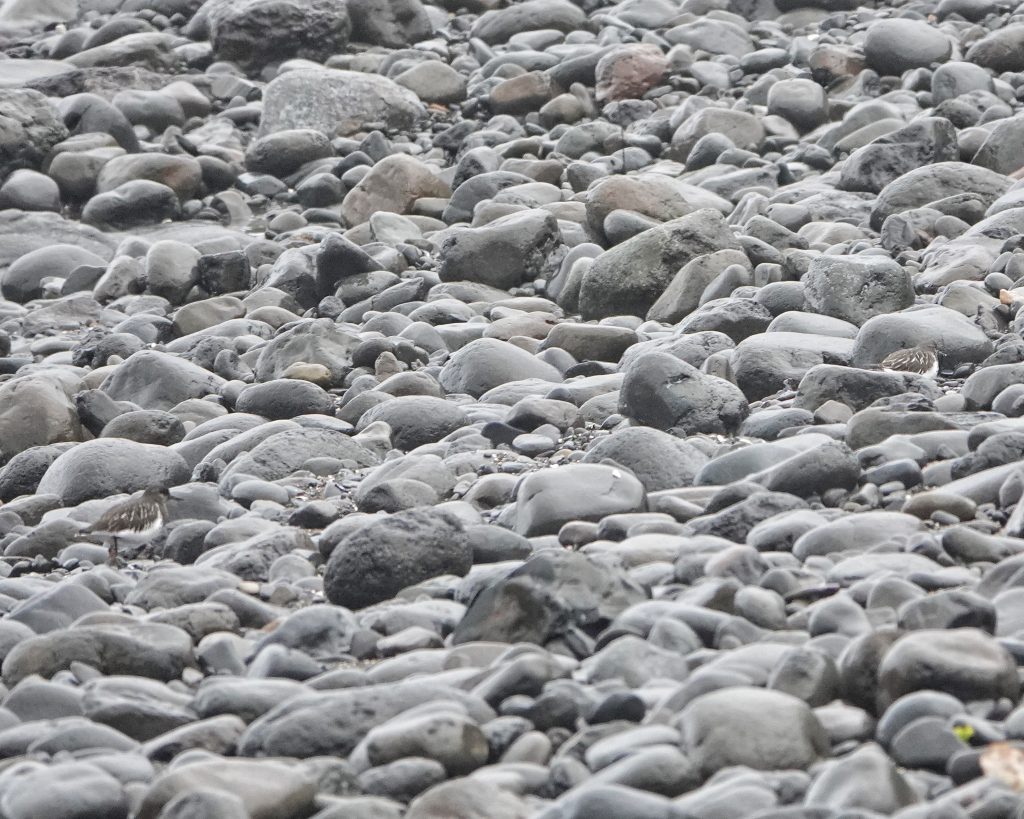
Black Turnstones (now classified as members of the sandpiper family, Scolopacidae) are usually monogamous in their mating, although the pair don’t often winter together. Instead the pairs meet up with each other at the previous year’s breeding site. They are quite faithful to a breeding site, and usually nest within 100’ of the previous year’s location, if they were successful there. If that nest wasn’t a success, they still tend to nest within 200’ of that location. There is a fascinating paper on “Mate fidelity and breeding site tenacity in a monogamous sandpiper, the black turnstone” (Handel/Gill; 2000) that is well worth a read.
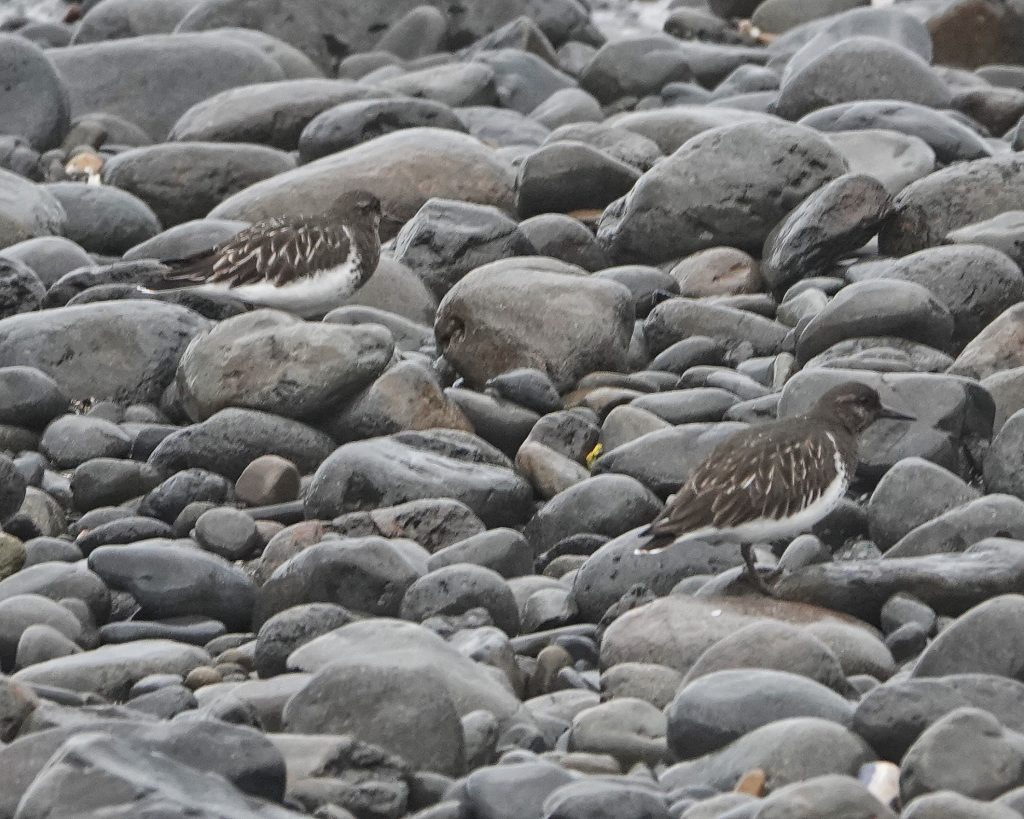
Historically Black Turnstones have wintered as far south as the Sea of Cortez, but it appears that climate change is shifting their winter range northward. An interesting paper on their migration patterns, and the way they have changed, can be found at “Using Geolocator Data to Address Changes in Migration Patterns for Black Turnstone” (Taylor et al.; 2022). It has been noticed for awhile that Black Turnstones feed heavily on herring spawn during their northward migration (“Predation on Pacific herring [Clupea pallasi] spawn by birds in Prince William Sound, Alaska”; Bishop/Green; 2001), and the decline of those herring runs may also be affecting the migration patterns of these birds.
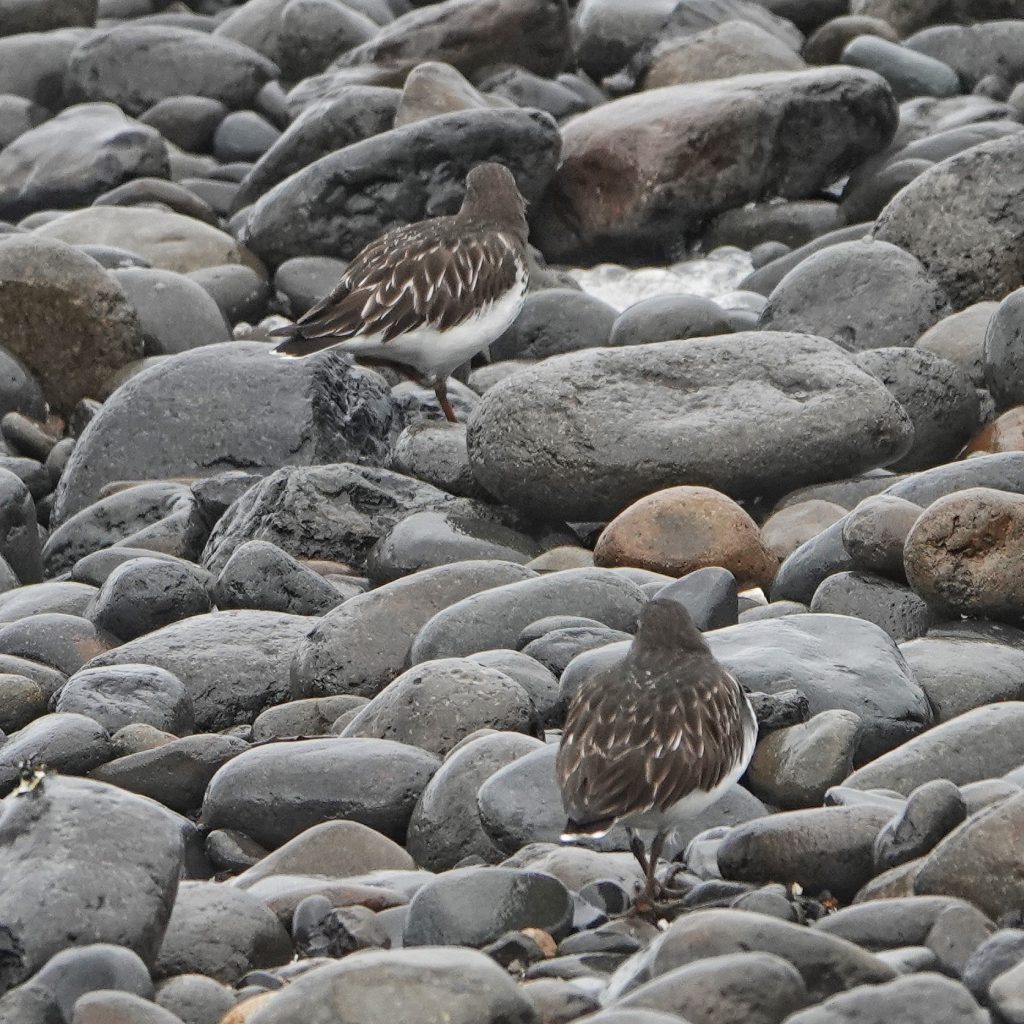
Description-Small (8.5-10” tall), mostly black, brown, and white shorebirds with a solid black bill and brown legs; head, neck, and breast dark greyish brown to black, belly white, and back brown.
Similar species– Ruddy Turnstones are browner overall, with orange legs, and in breeding plumage have a brown and white pattern on their head; Surfbirds have arrow-shaped spots on their bellies, a bicolored bill with a yellow base, and yellow legs; Rock Sandpipers have a longer, slightly downcurved bill with a yellow base, a greyer head, and a spotted breast.
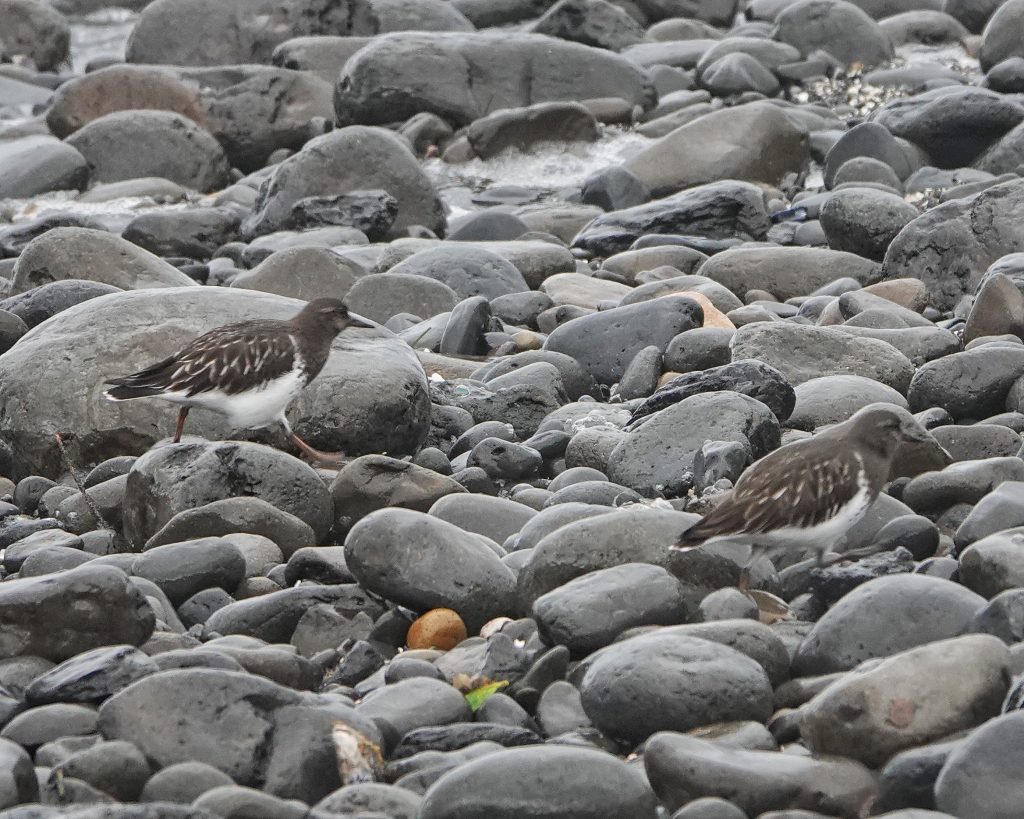
Habitat– Breeds in salt and estuarine marshes very near the coast; the rest of the time it is found along rocky beaches, headlands, jettys, and occasionally along sandy beaches if there is abundant cover for arthropods, such as kelp and wood.
Range-Pacific coast of North America (technically some of their breeding range is the coast of the Arctic Ocean, since it lies north of the Bering Strait); breeds along the western coast of Alaska, from the Aleutian Islands to Point Barrow, with 80% of the breeding population in the Yukon-Kuskokwim Delta; winters along the immediate coastline from s Alaska to the Sea of Cortez.
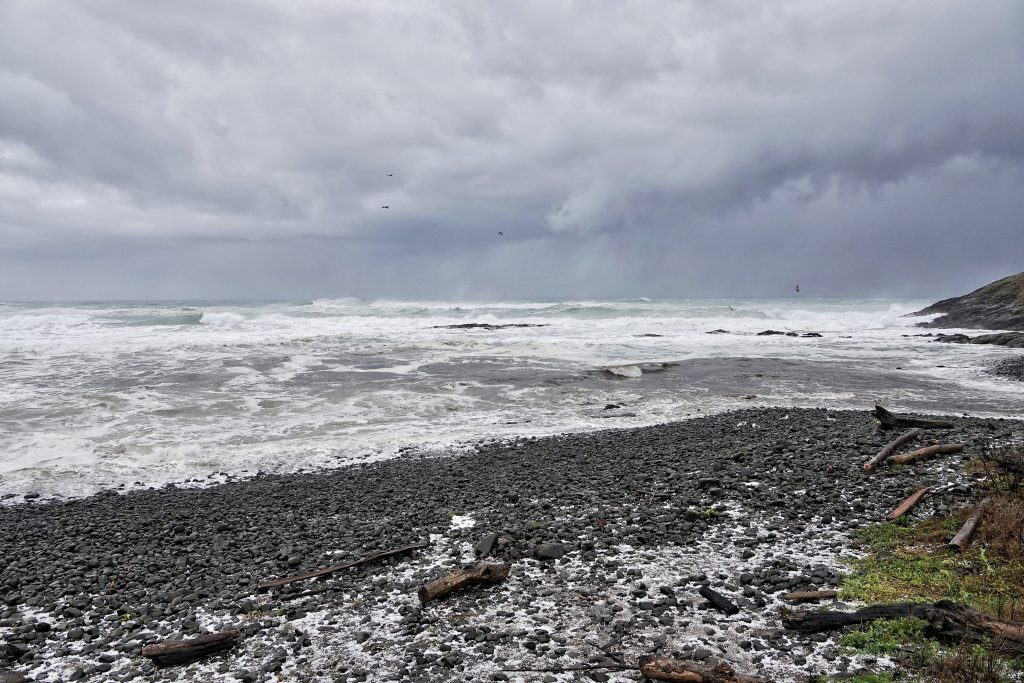
Eats-Crustaceans (mostly isopods and amphipods) insects, sea spiders, mollusks (mostly small mussels, limpets, snails, and barnacles), marine worms; during northward migration they feed heavily on herring eggs.
Eaten by-Most predation is on eggs and unfledged young, and predators include jaegers, gulls, sandhill cranes, and arctic foxes; I can find nothing specific about predators of adults, but I’d imagine the list includes almost any carnivore that can catch them.
Adults active-August to April in our region
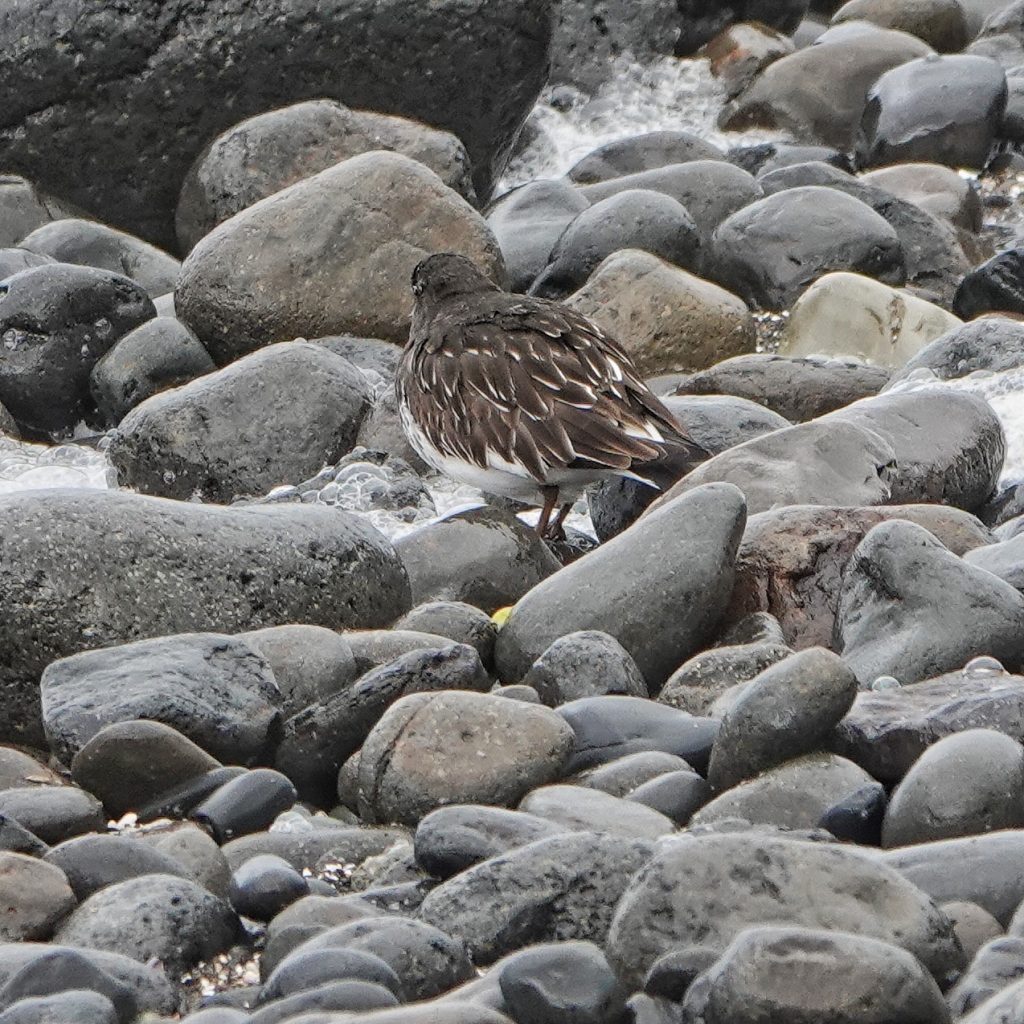
Life cycle-Both males and females incubate eggs; usually has only one brood, but may re-nest if first brood is lost before hatching; nests are scrapes or bowls on the ground; 3-4 eggs that are incubated for 22-24 days; young are precocial and feed themselves, and females often abandon the nest shortly after the eggs hatch; young fledge in 25-34 days; usually sexually mature the year after hatching, though some year-old females do not migrate or breed; may live up to 8 years.
Etymology of names–Arenaria is from the Latin word for ‘inhabiting sand’, which is more about them being a shoreline species than a sand lover, and they are much more likely to be found on beaches with cobbles rather than sand. The specific epithet melanocephala is from the Greek words for ‘black head’, not only very apropos, but the region of black that Black Turnstones refers to. And, as mentioned above, they do flip rocks, wood, and algal mats in search of prey.
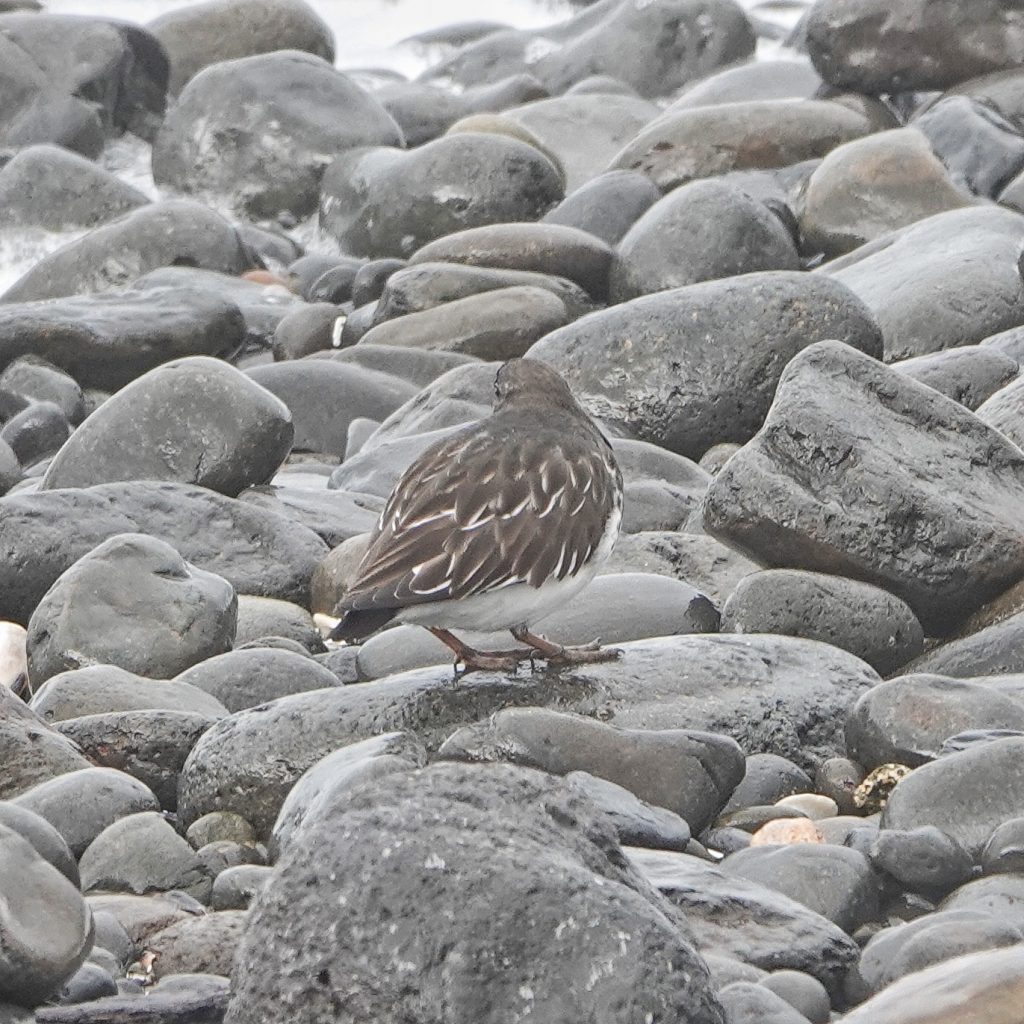
Black Turnstone Overview, All About Birds, Cornell Lab of Ornithology
Black Turnstone | Audubon Field Guide
Black turnstone • Arenaria melanocephala – Biodiversity of the Central Coast
https://www.degruyter.com/document/doi/10.1515/ami-2022-0118/pdf
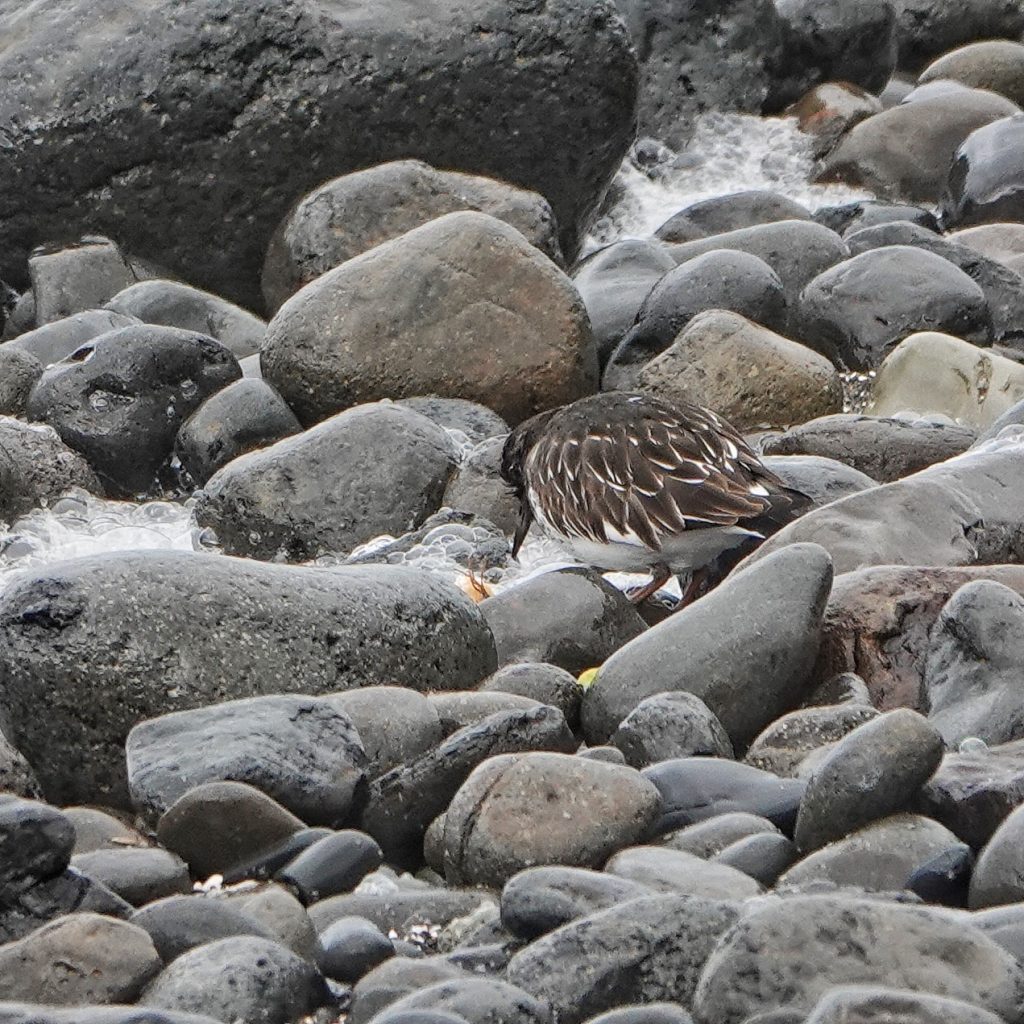
Excellent pictures and text. Thank you
Thanks for your appreciation, Michael!
Wow. I’m guessing if you don’t see them move, you might not see them at all! Lovely.
Sure seems like!
Great post and love the camouflaged photo! I love seeing them here on the Oregon Coast. So fun to watch.
Thanks for your appreciation!